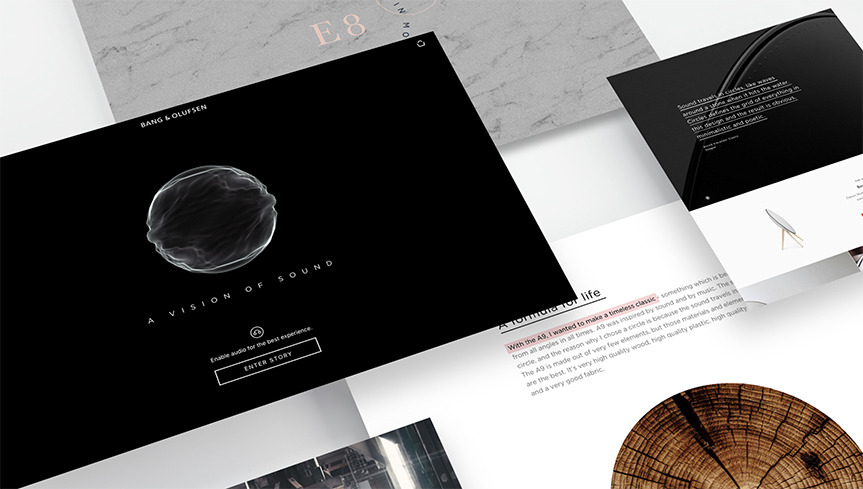What issue can we solve for you?
Type in your prompt above or try one of these suggestions
Suggested Prompt



Insight
How Luxury Brands Create Exclusive Digital Experiences
How Luxury Brands Create Exclusive Digital Experiences
Luxury is rooted in exclusivity. As ‘luxury’ goods become more ubiquitous and easier to access, people are turning towards unique experiences to fulfill a desire for the exclusive.
To gain an advantage in an increasingly competitive marketplace, luxury brands must look beyond what has historically defined “luxury” – products made of the finest materials and priced at the top of the market, boasting superior craftsmanship and a rich heritage – to create human experiences that connect with consumers in new and innovative ways. These experiences will need to conform to the traditional features of luxury brands by creating an intense and emotional connection to the consumer: a sense of scarcity, the suggestion of apparent status and elegant artisanry. They will also need to meet consumers’ evolving expectations for luxury experiences – immersive, memorable encounters that leverage new or augmented reality to enhance everyday life and delight in ways that feel distinctive and deeply personal.
A recent Norstat study shows that 90 percent of consumers feel that luxury brands fall behind their more mainstream counterparts for online experience. Seventy-two percent believe that online experiences provided by luxury retailers is inferior to the prestige of their physical stores. Luxury brands on the vanguard of this new paradigm have found opportunities to be both exclusive and available; timeless and innovative. They transcend the physical and digital to create data-driven experiences that engage consumers’ emotive desires seamlessly across offline and online channels, while preserving a sense of elegance and scarcity synonymous with being a luxury brand. And, they have invested in premium, multi-channel content that promotes uniqueness and has a sense of insider sheen that will resonate with high-end consumers.
As we look to 2022 and beyond, expect to see more luxury brands investing in digital technologies such as augmented reality, virtual reality, artificial intelligence, computer vision (face, gesture and/or emotional recognition software), gaming, cryptocurrencies, and the Internet of Things (IoT) to deliver exceptional and immersive consumer experiences that not only evoke deeper connections to the brand, but also provide a sense of exclusivity. By finding the right balance of online and offline content and experience, brands will be able to differentiate, engage new audiences and deliver impeccable customer service.
Crossing the physical/digital divide in luxury
Attempting to create luxury experiences that transcend our physical and digital worlds is not without its challenges and risks. Luxury brands are aware of the extremely high standards that target consumers are accustomed to and expect from its physical stores. For luxury brands to successfully cross over into digital they must consistently design and deliver personalized digital experiences that match those levels of quality. As the function of the physical store expands into a center of experience, logistics and personalized services, luxury brands must be prepared to incorporate new technologies into these stores in a way that delivers a fully integrated, fluid, and seamless omnichannel environment.
Consider the luxury e-commerce platform Farfetch, who earlier this year opened Browns Brook Street, a flagship Mayfair boutique in the heart of London’s luxury fashion epicenter. Used in conjunction with the Browns’ app, interactive, augmented-reality mirrors in the shop’s dressing rooms offer styling guidance and suggest complimentary products to the ones being tried on. By combining new-age technology with exceptional service, Farfetch gives customers a compelling reason to visit their physical store and immerse themselves in the brand experience.
As luxury brands look to navigate an increasingly, digital-first marketplace, several strategic imperatives help steer the planning process.

Decide who you want to be
Being digital requires re-examining your entire way of doing business and understanding where the new, often hidden, sources of value are. Be open to rethinking the entire value proposition: Who do we want to be? What do consumers most value from us? What is our unique advantage in the marketplace? How does our brand heritage translate into modern, digitally enhanced experiences?
Establish commonalities in your values and passions with those of your brand and your ideal customers and consider opportunities for enhancing, cultivating and building on these areas of synergy. Become a critical part of providing the integrated experiences that customers value and shape them productively. Also, engage and collaborate with the consumer throughout the journey of discovery and strategic planning.
As you determine the business your company wants to be in, it is equally important to consider the business that your ideal customer wants – and needs – you to be in. Don’t underestimate the importance of brand permission before making bold changes. Embrace transparency, empathy, and authenticity as cornerstones of your strategic planning process. With more consumers now placing emphasis on brand purpose and corporate social responsibility, even going as far as to abandon the brands that don’t align to their core values, consider how to deliver exceptional experiences while also showing an unwavering commitment to doing what is right for society and the planet.

Design experiences around the end-to-end consumer journey
The next decade will be the golden age for consumers, with technology-enabled shopping experiences giving them the simplicity, convenience and excitement they crave. Your company orbits around the consumer – not the other way around.
On the path to consumer centricity, it is imperative that luxury brands identify and prioritize the rollout of innovative technologies based on a deep, intimate understanding of the consumer journey and how these technologies will create experiences that matter at critical moments. Luxury brands must embrace their consumers as business partners by investing in collaborative consumer models that give a sense of brand identity and empowerment. Moreover, they must seek to turn their loyal consumers into raving fans through carefully personalized and curated products and services.
To do this, luxury brands must first enact cultural change and master empathy – not just collect data. Set the vision and direction at the top, empower and incentivize employees to place the consumer at the heart of daily decision making and align people and processes to what drives the greatest value to the consumer.

Think omnipresence, not omnichannel
The proliferation of digital channels alongside increasing demand for anytime, anywhere experiences, is forcing luxury brands to invest in cross-channel capabilities that ensure consumers can engage their brand universally and continuously. In the future, luxury brands will need to reassess the very essence of consumer behavior and design content-rich experiences that accurately reflect and respond to the way consumers interact with the world around them, including the more complex life events that lead consumers to engage their brand.
Brands must think beyond the channels themselves to understand the key moments they have to capture the consumer’s imagination and attention and connect with them in exclusive, distinctive and memorable ways. And they must shift their strategic focus from omnichannel to omnipresence, eliminating the walls between channels to engage consumers on their terms.

Turn data and advanced analytics into a competitive advantage
The pandemic highlighted the vital role that data and advanced analytics play in the day-to-day operations and decision making of the modern enterprise. The rapid rate of technological change, growing levels of connectivity between individuals, businesses and smart devices, and increasing marketplace volatility all favor increased use of non-human systems to identify and exploit insight-driven opportunities. In an uncertain and competitive future, using deeper customer insights to underpin personalized service, omnichannel experiences and renewed dedication to values and authenticity helps brands continue to be relevant and deliver value to both legacy and next-generation luxury shoppers.
To succeed, luxury brands must strive for a deeper and more empathic understanding of their target audience, including their needs, habits, desires, aspirations and values. Expect to see luxury brands increase their investment in ethnography and other human science methodologies to better understand the context in which consumers engage with their brand, enjoy their products and experience life. Also expect to see an increasing investment in sophisticated data analysis and machine learning tools that mimic human behavior and/or build spectacular settings.
This sort of information and underlying capability allows luxury brands to determine, adapt and curate the precise combination of products and experiences that their target consumers are most likely to purchase and engage with. It also enables them to deliver personalized content and experiences that connect with consumers, rationally and emotionally, throughout the buying journey at just the right moment – before, during, and after the purchase, both online and offline.
Paving the way forward
Ultimately, the concept of "luxury" is becoming less about products consumers want to own or places they want to visit, and more about who they want to be. Today's high-earning consumers are looking for unique and personalized experiences that help them learn, differentiate themselves, express who they are, feel better about themselves, and have a purpose and exclusivity beyond comfort and pampering. Luxury brands that understand this and use data and emerging technology to help customers live up to their aspirations of self-actualization give themselves a competitive advantage in today’s evolving world of luxury.
-
![Illustration of a shopping cart with a computer mouse to underscore digital retailing]()
Next-Gen Luxury Retail: How to Leverage Data to Lead in Digital
The key to creating personalized experiences in luxury will largely be centered around the retailer’s ability to get data right.
-
![]()
Bang & Olufsen Experience
How together with digital transformation partner Publicis Sapient, Bang & Olufsen are investing in digital channels.
-
![Audi Showroom]()
Audi Launches a Transformational Moment in Retail
Audi turns the problem of less showroom into more sales without compromising the Audi experience.







